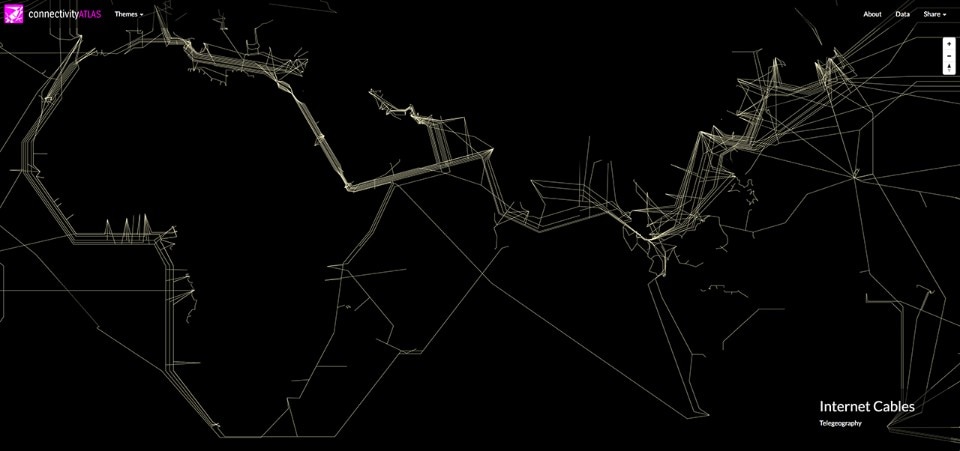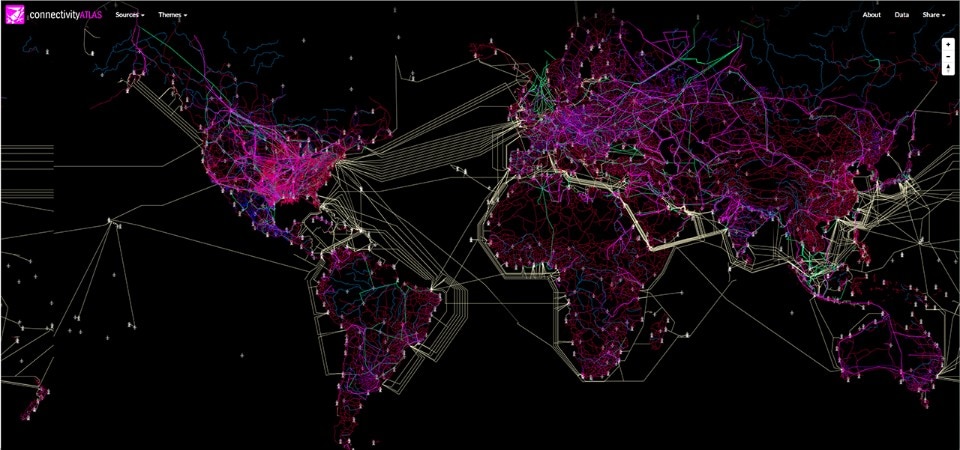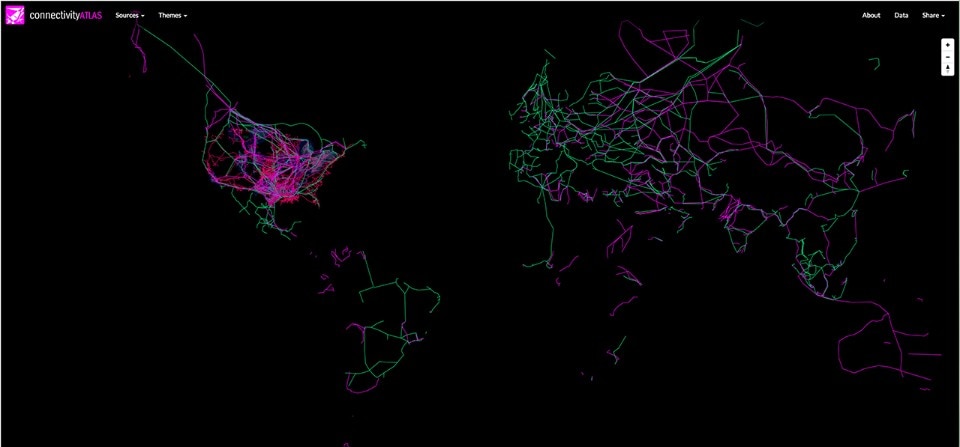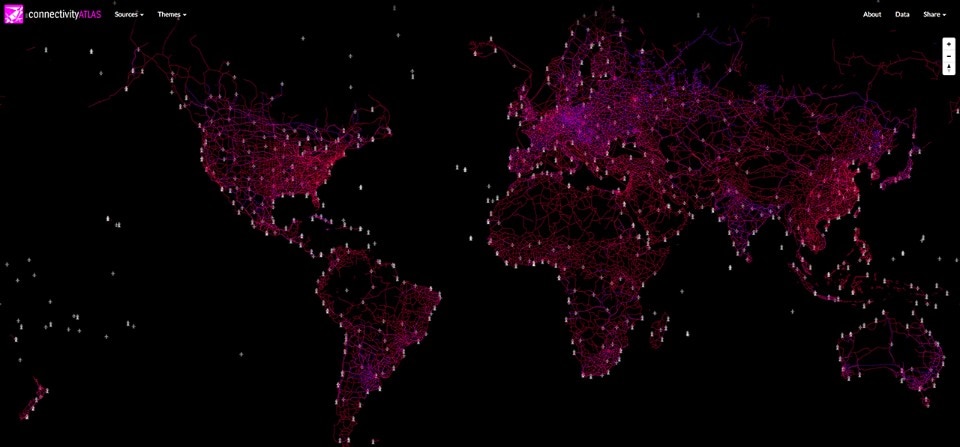You can read the full article on the Innovation issue, the supplement of Domus 1021, March 2018.
According to Parag Khanna, a former child prodigy of international relations and the author of several books on the subject (see Connectography: Mapping the Future of Global Civilization, 2016), there are two areas we need to focus on: geography and connectivity. Khanna distinguishes three types of geography: physical, political and functional, saying that the latter is the most important one today. It is composed of lines that transcend the classic political map and that often contrast with the natural boundaries formed by physical geography. Khanna divides connectivity into three systems: skeletal, vascular and nervous. The skeleton system is transportation: highways, railways, bridges, tunnels, airports and seaports. The vascular system is energy: oil and gas pipelines, refineries, electricity grids and power plants. The nervous system is communications: undersea Internet cables, satellites and data centres.

In order to understand where the world is going, he says, we must forget about physical and political maps, and take into account only functional geography. We need to look where the new physical lines are built. These will determine future geopolitical equilibriums. Khanna says that innovation from a geopolitical viewpoint means infrastructure. A road connecting two megalopolises in China can be considered comparable to the most revolutionary existing gas pipeline. It’s the outcome that counts in geopolitics, not the magnitude of the project. Khanna says that despite the fact that every new connection is a source of complexity, in order to evaluate the practical effects, it suffices to observe the resulting profit. Geopolitical impact is an entirely different thing, and is often unpredictable. Connectivity is one of the main tools in the grand strategy of geopolitics. (...)





